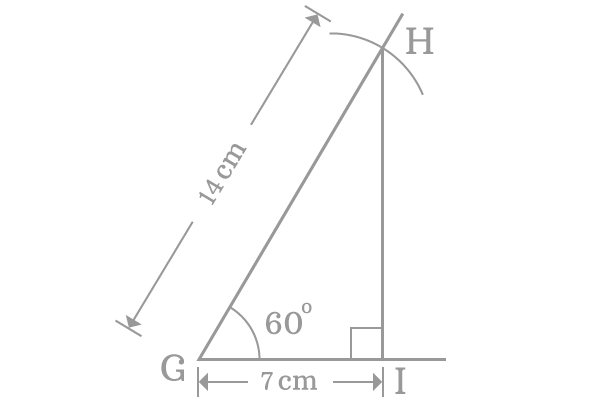The inverse of the cosine function is called the inverse cosine function.
The cosine function represents a value of the ratio of length of the adjacent side to length of the hypotenuse at the associated angle of the triangle, whereas the inverse cosine function represents an angle of the triangle for a value of the ratio of the length of the adjacent side to length of the hypotenuse of the same right angled triangle.
The inverse cosine is written in short form as $\large \arccos$ or $\large \cos^{-1}$ in mathematics.
As per the fundamental definition of the inverse cosine function, it is written in mathematical form in the following ways.
$\large \cos^{-1} \normalsize \Bigg[\dfrac{Length \, of \, Adjacent \, side}{Length \, of \, Hypotenuse}\Bigg]$ $\,=\,$ $Angle \, of \, the \, Triangle$
It is also written in the following form.
$\large \arccos \normalsize \Bigg[\dfrac{Length \, of \, Adjacent \, side}{Length \, of \, Hypotenuse}\Bigg]$ $\,=\,$ $Angle \, of \, the \, Triangle$

For example, $\Delta CAB$ is a right angled triangle and the angle of the triangle is theta ($\theta$). $\overline{AB}$ and $\overline{AC}$ are adjacent side and hypotenuse and their lengths are represented by $AB$ and $AC$ respectively.
Write the arc cosine function in terms of sides of the triangle $CAB$ to express it in mathematical form.
$\large \cos^{-1} \normalsize \Big(\dfrac{AB}{AC}\Big) \,=\, \theta \,\,\,$ or $\,\,\, \large \arccos \normalsize \Big(\dfrac{AB}{AC}\Big) \,=\, \theta$
Consider $x$ as the quotient of the length of the adjacent side by the length of the hypotenuse.
Then, $\large \cos^{-1} x \,=\, \theta \,\,\,$ or $\,\,\, \large \arccos x \,=\, \theta$
Thus, an inverse cosine function is denoted as $\cos^{-1} x$ or $\arccos x$ in mathematical form.
The functionality of the inverse cosine function can be studied from an example.

Thus a right angled triangle $HGI$ is constructed geometrically and now measure the length of the adjacent side ($GI$). It should be $7 \, cm$ exactly. The angle of the triangle is $60^\circ$.
Now, express the inverse cosine function in terms of ratio of sides and the respective angle of the triangle.
$\cos^{-1} \Big(\dfrac{7}{14}\Big) \,=\, 60^\circ$
$\implies \require{cancel} \cos^{-1} \Big(\dfrac{\cancel{7}}{\cancel{14}}\Big) \,=\, 60^\circ$
$\implies \cos^{-1} \Big(\dfrac{1}{2}\Big) \,=\, 60^\circ$
$\therefore \,\,\,\,\,\, \cos^{-1} (0.5) \,=\, 60^\circ$
It is also written in mathematical form alternatively.
$\arccos (0.5) \,=\, 60^\circ$
The inverse cosine function represented that the angle of the right angled triangle is $60^\circ$ if $0.5$ is the quotient of the length of the adjust side by the length of the hypotenuse.
A free math education service for students to learn every math concept easily, for teachers to teach mathematics understandably and for mathematicians to share their maths researching projects.
Copyright © 2012 - 2025 Math Doubts, All Rights Reserved